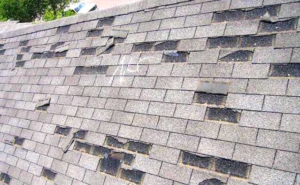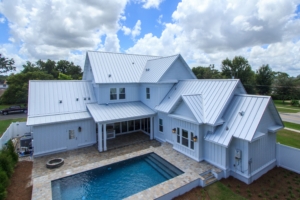Modified Bitumen vs. Rolled Roofing: Understanding the Differences
When selecting the right roofing material for your home or building, it’s important to consider various factors such as durability, weather resistance, and installation ease. Two popular options in the roofing industry are modified bitumen and rolled roofing. While both are commonly used for low-slope or flat roofs, they differ in composition, installation methods, and performance characteristics. In this blog post, we will delve into the dissimilarities between modified bitumen and rolled roofing to help you decide on your roofing needs.
Modified Bitumen Roofing:
Modified bitumen roofing is an evolution of traditional asphalt roofing. It consists of asphalt reinforced with either polyester or fiberglass. The addition of modifiers, such as styrene-butadiene-styrene (SBS) or atactic polypropylene (APP), enhances the material’s flexibility, elongation, and resistance to weathering. These modifiers make modified bitumen roofing more robust and durable than standard asphalt.
Installation of modified bitumen typically involves two methods: torch-applied or cold-applied. In torch-applied installation, the material’s underside is heated with a torch to create an adhesive bond with the underlying roof surface. Cold-applied installation, on the other hand, utilizes adhesives or self-adhesive sheets to secure the material in place.
Advantages of Modified Bitumen Roofing:
1. Durability: Modified bitumen roofing is designed to withstand harsh weather conditions, including extreme temperatures, UV radiation, and high winds. Its flexibility allows it to expand and contract with temperature fluctuations without cracking.
2. Longevity: With proper installation and regular maintenance, modified bitumen roofs can have a lifespan of 20 to 30 years, making them a cost-effective choice.
3. Versatility: Modified bitumen comes in a variety of colors and styles, allowing for customization and aesthetic appeal.
4. Repairability: In the event of damage, modified bitumen roofs are relatively easy to repair or replace without extensive disruption to the entire roofing system.
Rolled Roofing:
Rolled roofing, also known as roll roofing or mineral-surfaced roofing, is an asphalt-based material that comes in large rolls. It is commonly used for low-slope roofs on sheds, garages, and other outbuildings. Rolled roofing is composed of a layer of asphalt-saturated organic or fiberglass felt and is coated with mineral granules on the exposed surface for added protection against the elements.
Installation of rolled roofing is relatively straightforward. The material is simply unrolled onto the roof surface and secured using nails or adhesives. Rolled roofing is often applied as a temporary or budget-friendly roofing solution, as it may not provide the same level of durability and longevity as other roofing materials.
Advantages of Rolled Roofing:
1. Cost-effective: Rolled roofing is one of the most affordable roofing options available, making it a popular choice for budget-conscious projects or temporary structures.
2. Easy Installation: Rolled roofing requires minimal tools and expertise for installation, making it a feasible DIY option for homeowners with basic construction skills.
3. Quick Application: Due to its large roll size and simple installation process, rolled roofing can be applied quickly, saving time on the construction timeline.
4. Versatility: Rolled roofing is available in various colors, allowing for some customization to match the building’s aesthetic.
Differences and Considerations:
1. Performance: Modified bitumen roofing generally offers better performance and durability compared to rolled roofing. It can withstand severe weather conditions and has a longer lifespan, making it more suitable for long-term roofing needs.
2. Installation Complexity: Modified bitumen roofing requires professional installation, often involving specialized equipment and skills. Rolled roofing, on the other hand, is relatively simple to install and can be done by homeowners or contractors with minimal experience.
3. Cost: Modified bitumen roofing is generally more expensive than rolled roofing due to its enhanced durability and performance characteristics. Rolled roofing provides a cost-effective option for short-term roofing needs or projects with budget constraints.
4. Roof Slope: Modified bitumen is typically used on low-slope or flat roofs, while rolled roofing is commonly applied to very low-slope or gently sloped roofs.
Let’s take a closer look at the pros and cons of modified bitumen and rolled roofing and their respective costs.
Modified Bitumen Roofing Pros and Cons:
Pros:
1. Durability: Modified bitumen roofing is highly durable and can withstand harsh weather conditions, including extreme temperatures and high winds.
2. Longevity: With proper installation and maintenance, modified bitumen roofs can have a lifespan of 20 to 30 years.
3. Versatility: Modified bitumen comes in various colors and styles, allowing for customization and aesthetic appeal.
4. Repairability: If damaged, modified bitumen roofs are relatively easy to repair or replace without major disruptions to the entire roofing system.
Cons:
1. Installation Complexity: Modified bitumen roofing requires professional installation, often involving specialized equipment and skills.
2. Higher Cost: Modified bitumen roofing is generally more expensive than rolled roofing due to its enhanced durability and performance characteristics.
3. Weight: Modified bitumen can be heavier than rolled roofing, requiring proper structural support for installation.
Cost: The cost of modified bitumen roofing can vary depending on factors such as roof size, complexity, location, and the specific type of modified bitumen being used. On average, the cost can range from $3 to $6 per square foot for materials and installation.
Rolled Roofing:
Pros:
1. Cost-effective: Rolled roofing is one of the most affordable roofing options available, making it suitable for budget-conscious projects or temporary structures.
2. Easy Installation: Rolled roofing can be installed by homeowners or contractors with basic construction skills, saving on labor costs.
3. Quick Application: Due to its simple installation process and large roll size, rolled roofing can be applied quickly, reducing construction time.
4. Versatility: Rolled roofing is available in various colors, allowing for some customization to match the building’s aesthetic.
Cons:
1. Limited Lifespan: Rolled roofing generally has a shorter lifespan compared to modified bitumen, ranging from 5 to 15 years.
2. Weather Resistance: While it provides some protection, rolled roofing may not be as resistant to extreme weather conditions as modified bitumen.
3. Aesthetics: Rolled roofing may not offer the same visual appeal as other roofing materials, as it lacks the dimensional appearance of shingles or tiles.
Cost: Rolled roofing is one of the most affordable roofing options, with material costs ranging from $0.75 to $2 per square foot. The overall cost, including installation, can vary depending on the size of the roof and labor rates.
It’s important to note that these cost ranges are estimates and can vary depending on various factors, including location, market conditions, and specific project requirements. Obtaining multiple quotes from reputable roofing contractors in your area is recommended to get a more accurate cost assessment for your specific project.
Remember, the decision between modified bitumen and rolled roofing should consider not only the upfront cost but also the long-term durability, performance, and specific needs of your roofing project.
Here are 10 frequently asked questions (FAQs) and their answers about modified bitumen and rolled roofing:
1. Q: What is the main difference between modified bitumen and rolled roofing?
A: The main difference lies in their composition and performance. Modified bitumen is reinforced asphalt with modifiers for enhanced durability, while rolled roofing is an asphalt-based material with mineral surfacing.
2. Q: Which roofing material is more durable, modified bitumen, or rolled roofing?
A: Modified bitumen roofing is generally more durable than rolled roofing. It can withstand harsh weather conditions and has a longer lifespan, typically ranging from 20 to 30 years.
3. Q: Can modified bitumen or rolled roofing be installed on any type of roof slope?
A: Modified bitumen is typically used on low-slope or flat roofs, while rolled roofing is suitable for very low-slope or gently sloped roofs.
4. Q: Is professional installation required for modified bitumen and rolled roofing?
A: Modified bitumen roofing usually requires professional installation due to its complexity, specialized equipment, and the need for proper techniques. Rolled roofing can be installed by homeowners or contractors with basic construction skills.
5. Q: Are both modified bitumen and rolled roofing resistant to weather elements?
A: Modified bitumen roofing offers better weather resistance due to its added modifiers and reinforced composition. Rolled roofing provides some protection but may not be as resistant to extreme weather conditions.
6. Q: Can modified bitumen and rolled roofing be repaired if damaged?
A: Yes, both roofing materials can be repaired. Modified bitumen roofs are relatively easy to repair or replace without major disruptions to the entire roofing system. Rolled roofing can also be patched or replaced when damaged.
7. Q: Which roofing option is more cost-effective, modified bitumen, or rolled roofing?
A: Rolled roofing is generally more cost-effective, as it is one of the most affordable roofing options available. Modified bitumen roofing tends to be more expensive due to its enhanced durability and performance characteristics.
8. Q: What is the average lifespan of rolled roofing?
A: Rolled roofing has a shorter lifespan compared to modified bitumen, typically ranging from 5 to 15 years, depending on the quality of the material and weather conditions.
9. Q: Can rolled roofing be used as a long-term roofing solution?
A: Rolled roofing is often used as a temporary or budget-friendly roofing option or for structures with short-term needs. It may not be as suitable for long-term roofing requirements.
10. Q: Are modified bitumen and rolled roofing available in different colors?
A: Modified bitumen roofing is available in various colors and styles, allowing for customization and aesthetic appeal. Rolled roofing also comes in different colors, providing some options for customization.
Remember, these FAQs and answers provide general information. It’s always recommended to consult with roofing professionals or manufacturers to get specific details and recommendations for your unique roofing project.
Summary: Modified Bitumen vs. Rolled Roofing
When choosing between modified bitumen and rolled roofing, it’s crucial to consider factors such as durability, longevity, installation complexity, and budget constraints. Modified bitumen offers superior performance and longevity, making it suitable for long-term roofing needs, whereas rolled roofing is an affordable and quick solution for temporary structures or projects with budget limitations. Consulting with a roofing professional can provide further guidance in selecting the right roofing material based on your specific requirements and goals.








